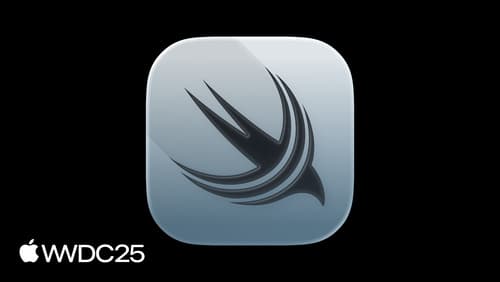migrate project to ios 26
Asked on 2025-07-31
1 search
To migrate your project to iOS 26, there are several key updates and changes you should be aware of:
-
UI Scene Lifecycle: Starting with iOS 26, adopting the UI Scene lifecycle is mandatory for all UIKit apps built with the latest SDK. This means you need to transition away from older lifecycle methods and fully implement the UI Scene lifecycle. For more details, you can refer to the session What’s new in UIKit (21:20).
-
SwiftData Schema Migration: If your app uses SwiftData, you will need to update your schema to version 4, which includes subclasses and a lightweight migration stage. This involves creating a schema migration plan to handle transitions between different schema versions. More information can be found in the session SwiftData: Dive into inheritance and schema migration (07:39).
-
Xcode 26: Ensure you are using Xcode 26, which includes new features and tools to help you build and debug your app efficiently. It supports the latest iOS SDK and provides enhancements for writing and testing code. For more details, see the session What’s new in Xcode (00:00).
-
OpenURL Method: In iOS 26, the OpenURL method now accepts file URLs, allowing your app to hand off documents to external viewers if they are not natively supported. This can be useful for apps dealing with various document types. More information is available in the session What’s new in UIKit (22:40).
By following these guidelines and utilizing the resources provided in the WWDC sessions, you can successfully migrate your project to iOS 26.

What’s new in UIKit
Modernize your app with the latest APIs in UIKit, including enhanced menu bar support, automatic observation tracking, a new UI update method, and improvements to animations. We’ll also cover how you can include SwiftUI scenes in your UIKit app and explore SF Symbols, HDR color pickers, and more.

SwiftData: Dive into inheritance and schema migration
Discover how to use class inheritance to model your data. Learn how to optimize queries and seamlessly migrate your app’s data to use inheritance. Explore subclassing for building model graphs, crafting efficient fetches and queries, and implementing robust schema migrations. Understand how to use Observable and persistent history for efficient change tracking.

Make your UIKit app more flexible
Find out how your UIKit app can become more flexible on iPhone, iPad, Mac, and Apple Vision Pro by using scenes and container view controllers. Learn to unlock your app’s full potential by transitioning from an app-centric to a scene-based lifecycle, including enhanced window resizing and improved multitasking. Explore enhancements to UISplitViewController, such as interactive column resizing and first-class support for inspector columns. And make your views and controls more adaptive by adopting new layout APIs.
